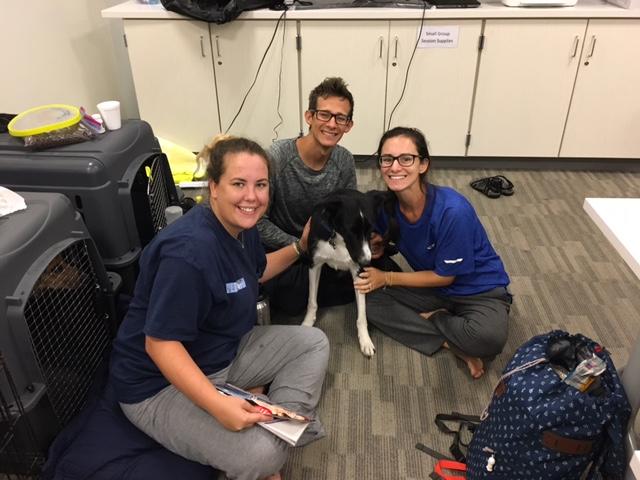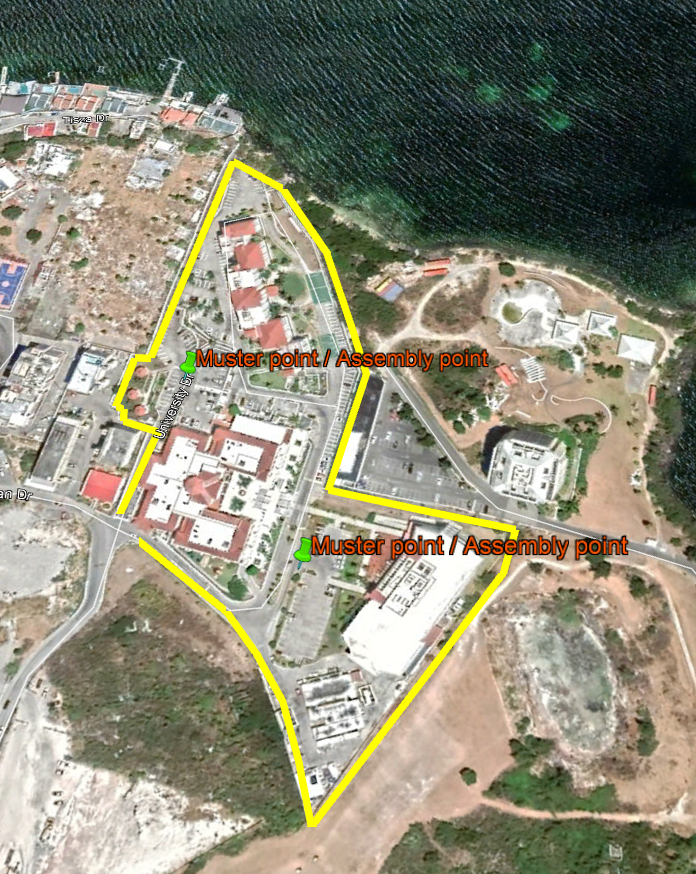Knowing how serious these events can be, we maintain a comprehensive Hurricane Response Plan with protocols established to help with campus safety before, during, and after a weather-related event. AUC regularly reviews its Hurricane Response Plan and updated the most recent version in May 2019.
In addition to this webpage, a number of downloadable preparedness materials have been developed to keep AUC students and the campus community informed and aware of weather-related activities. In the event of a hurricane or other emergency, AUC will update the Weather Alerts page (see below) with official university announcements.
Hurricane Information
AUC's Hurricane Response Plan
In the event of an approaching storm, AUC’s incident command team will work closely with the administration and local emergency officials to activate the university's Hurricane Response Plan. This plan provides a framework for how AUC will manage an emergency in a way that prioritizes the campus community’s safety and security.
Taking into consideration the storm’s strength and projected path, AUC will decide whether to cancel classes and open the university as a shelter. Our goal is to make this decision in a timely manner so that students and community members have the time they need to prepare for a storm. While students are not required to shelter on campus, they are strongly encouraged to do so.
PET SAFETY
Natural disasters are unpredictable but planning and preparing for one is in your control. For pet owners, that means knowing how you are going to take care of your pet during a storm and having supplies and travel documents ready at a moment’s notice. Stock up on supplies that will keep you and your pet safe and comfortable for up to five days and pack in a large bag that you can easily grab. To help you plan, we have compiled a checklist to help prepare your furry friends.
Other Important Resources
The gulf coast and shore lines of Sint Maarten are prone to storm surges and flooding. Tropical storms and strong rains can have a severe impact on the following waterfront and low-lying areas. If you live in these communities, please make your way to campus ahead of an approaching storm.
- Beacon Hill
- Simpson Bay
- Pelican
- Philipsburg (along the boardwalk)
- Point Pirouette
- Nettle Bay
Campus community members are encouraged to follow local news for weather-related updates and information.
- Laser 101's Storm Watch Team (101.1 FM)
- Voice of Sint Maarten (1300 AM or 102.7 FM)
- Caribbean Radio International (93.3 FM)
Earthquake and Tsunami Preparedness
In the event of an earthquake and/or tsunami watch or warning, AUC will alert students and colleagues via our SIREN notification system. In Sint Maarten, we have two Emergency Assembly Points (EAP) on campus.
Before an Earthquake
- Make sure shelves are secure and designed with latching doors or raised edges to prevent objects from falling.
- Bolt top-heavy furniture and equipment to walls or floors.
- Store breakables and heavy objects on lower shelves.
- Anchor overhead lights, heavy artwork, and mirrors.
- Under sturdy furniture such as a heavy desk or table.
- Against an inside wall.
- Away from glass that could shatter or heavy bookcases or furniture that could fall over.
During an Earthquake
- Stay where you are and drop onto your hands and knees. This position protects you from falling but allows you to still move if necessary.
- Cover your head and neck (and your entire body if possible) under the shelter of a sturdy table or desk. If there is no shelter nearby, get down near an interior wall or next to low-lying furniture that won’t fall on you.
- Hold onto your shelter (or to your head and neck) until the shaking stops. Be prepared to move with your shelter if the shaking shifts it around.
- Quickly move away from glass, hanging objects, bookcases, cabinets, or other large furniture that could fall. Watch for falling objects, such as bricks from fireplaces and chimneys, light fixtures, wall hangings, high shelves, and cabinets with doors that could swing open.
- Grab something to shield your head and face from falling debris and broken glass.
- If you are in the kitchen, quickly turn off the stove and take cover at the first sign of shaking.
- If you are in bed, protect your head with a pillow. You are less likely to be injured staying where you are.
- Do not rush outside. Stairways may be broken and exits jammed with people. Do not use elevators as the power for elevators may go out and leave you trapped. The greatest danger from falling debris is just outside doorways and close to outer walls. If for safety reasons you must leave the building, choose your exits as carefully as possible.
- If you are outside, stay there. Move away from the building, garage, walls, power poles and light posts. Electric power lines are a serious hazard - stay away from fallen lines. If possible, proceed cautiously to an open area.
- If you are in a moving car, stay in your car and pull over as quickly as possible. A car is an excellent shock absorber and will shake a lot on its springs during an earthquake, but it's a fairly safe shelter from which to assess your situation.
- Avoid fallen power lines. You are at an increased risk of encountering fallen live wires during and after an earthquake. If you are on foot, make a wide path around the wires. If you are in the car and live wires have fallen across the car, remain where you are. Your car is usually well insulated and will protect you from electric shock. Never assume that downed power lines are dead.





